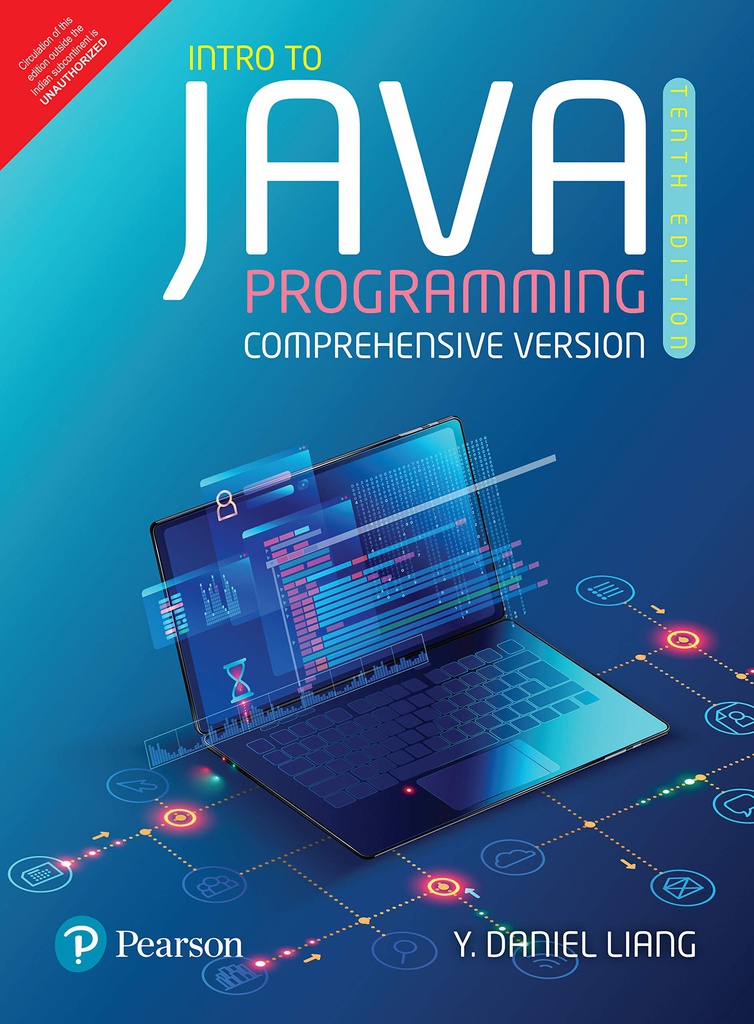Intro to Java Programming, Comprehensive Version, 10e
Daniel Liang teaches concepts of problem-solving and object-oriented programming using a fundamentals-first approach. Beginning programmers learn critical problem-solving techniques then move on to grasp the key concepts of object-oriented, GUI programming, advanced GUI and Web programming using Java .This title is a Pearson Global Edition. The Editorial team at Pearson has worked closely with educators around the world to include content which is especially relevant to students outside the United States. Fundamentals-First Approach Fundamentals-First: The book is fundamentals-first, which introduces basic programming concepts and techniques before objects and classes. The fundamental concepts and techniques of loops, methods and arrays are the foundation for programming. Building the foundation prepares students to learn object-oriented programming and advanced Java programming. Why Fundamentals-First. Learning basic logic and fundamental programming techniques like loops and step-wise refinement is essential for new programmers to succeed. Students who cannot write code in procedural programming are not able to learn object-oriented programming. A good introduction on primitive data types, control statements, methods and arrays prepares students to learn object-oriented programming .From Fundamentals to Object-Oriented: Often students have difficulty adapting to the object-oriented paradigm. The book addresses this issue in chapter 10 on transition from procedural programming to object-oriented programming. The chapter focuses on class design. Several examples are used to demonstrate the advantages of object-oriented programming so that students learn how and when to apply OOP effectively.
Chapter 1 Introduction to Computers, Programs and Java
Chapter 2 Elementary Programming
Chapter 3 Selections
Chapter 4 Mathematical Functions, Characters and Strings
Chapter 5 Loops
Chapter 6 Methods
Chapter 7 Single-Dimensional Arrays
Chapter 8 Multidimensional Arrays
Chapter 9 Objects and Classes
Chapter 10 Object-Oriented Thinking
Chapter 11 Inheritance and Polymorphism
Chapter 12 Exception Handling and Text I/O
Chapter 13 Abstract Classes and Interfaces
Chapter 14 JavaFX Basics
Chapter 15 Event-Driven Programming and Animations
Chapter 16 JavaFX UI Controls and Multimedia
Chapter 17 Binary I/O
Chapter 18 Recursion
Chapter 19 Generics
Chapter 20 Lists, Stacks, Queues and Priority Queues
Chapter 21 Sets and Maps
Chapter 22 Developing Efficient Algorithms
Chapter 23 Sorting
Chapter 24 Implementing Lists, Stacks, Queues and Priority Queues
Chapter 25 Binary Search Trees
| Book | |
|---|---|
| Author | Liang |
| Pages | 1344 |
| Year | 2018 |
| ISBN | 9789353065782 |
| Publisher | Pearson |
| Language | English |
| Uncategorized | |
| Edition | 10/e |
| Weight | 650 g |
| Dimensions | 20.3 x 25.4 x 4.7 cm |
| Binding | Paperback |


